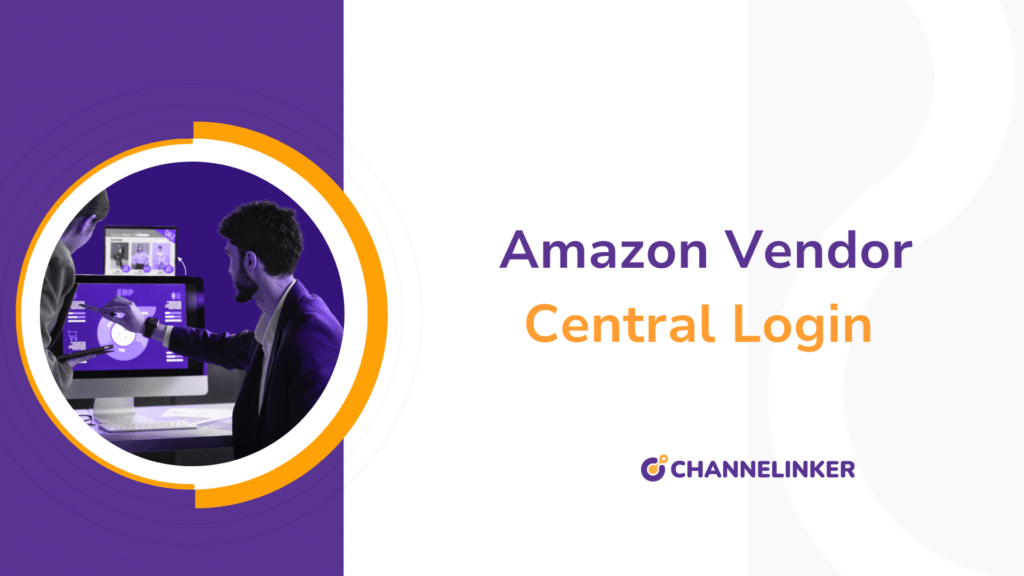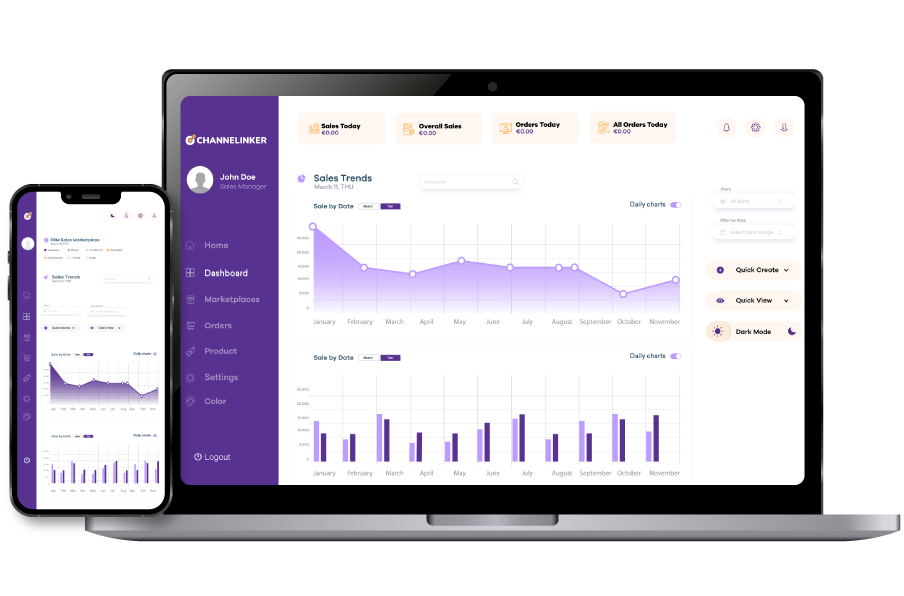Amazon Vendor Central Login: Your Complete Guide to Access, Setup, and Management

Table of Contents
Navigating the Amazon Vendor Central login process is the crucial first step for brands looking to establish a direct wholesale relationship with Amazon. Unlike the open registration process of Seller Central, Vendor Central operates on an invitation-only basis, making proper account setup and maintenance critical for ongoing success.. This comprehensive guide will walk you through every aspect of accessing your Vendor Central account, from initial login procedures to advanced security practices and regional considerations.
For businesses serious about scaling their Amazon presence, understanding the intricacies of the vendor central amazon login system is essential. Whether you’re a first-time vendor setting up your account or an experienced brand manager troubleshooting access issues, this guide provides the authoritative information you need to successfully navigate Amazon’s B2B platform. We’ll cover everything from common login challenges to regional differences across markets like the US, Canada, and Germany, ensuring you have the knowledge to maximize your vendor relationship with Amazon.
Introduction
Amazon Vendor Central represents one of the most coveted partnerships in ecommerce, offering brands the opportunity to sell directly to Amazon as a wholesale supplier. However, accessing this platform begins with understanding the proper amazon vendor central log in procedures and requirements. Unlike the open registration process of Seller Central, Vendor Central operates on an invitation-only basis, making proper account setup and maintenance critical for ongoing success.

The complexity of the Vendor Central ecosystem extends beyond simple login credentials. Vendors must navigate different regional portals, understand varying authentication requirements, and maintain compliance with Amazon’s evolving security standards. This introduction to Vendor Central access will establish the foundation for understanding not just how to log in, but how to optimize your entire vendor relationship with Amazon through better Amazon marketplace growth strategies.
For marketplace integration specialists and ecommerce managers, mastering the Amazon Vendor Central platform (noting this common misspelling that many users search for) requires both technical knowledge and strategic insight. The platform serves as the gateway to Amazon’s vast customer base, but only for those who can successfully navigate its access requirements and ongoing operational demands. For businesses managing operations across multiple channels, multi-marketplace integration solutions like Channelinker ensure smooth synchronization of orders, inventory, and pricing across Seller and Vendor ecosystems.
Where to Log In to Vendor Central
The primary access point for Amazon Vendor Central is through the official portal at vendorcentral.amazon.com. This centralized login system serves as the main gateway for all vendor-related activities, from inventory management to financial reporting. However, understanding the nuances of different access points and regional variations is crucial for seamless account management.

When accessing amazon com vendor central, vendors should always use the official Amazon URL to ensure security and proper functionality. Bookmark the correct login page to avoid phishing attempts and ensure you’re always accessing the legitimate platform. The login interface requires your registered email address and password, along with any additional authentication factors you’ve configured for your account.
For businesses operating across multiple Amazon marketplaces, it’s important to understand that while the login credentials may be the same, different regional portals may have varying interfaces and available features. The amazon vendor central com portal serves as your primary access point, but regional considerations may require additional setup steps depending on your geographic scope of operations.
Regional vendors should be particularly aware of marketplace-specific requirements. For instance, Canadian vendors accessing amazon vendor central canada through the Canadian Vendor Central portal may encounter different tax documentation requirements or reporting standards compared to their US counterparts. Always ensure you’re accessing the correct regional portal for your specific vendor agreement and operational requirements. For businesses that sell in multiple regions, leveraging Amazon ERP integrations with systems like SAP or Odoo helps streamline compliance and login management across borders.
Common Login Issues and Solutions
Login difficulties represent one of the most frequent challenges vendors face when accessing their accounts. Password-related issues top the list, often stemming from forgotten credentials, expired passwords, or conflicts with browser-saved information. When encountering vendor central amazon login problems, the first step involves clearing browser cache and cookies, then attempting to log in using an incognito or private browsing window.
Two-factor authentication complications frequently cause access delays for vendors. If you’re not receiving authentication codes via SMS or email, check your spam folders and ensure your contact information is current in your account settings. Amazon’s security systems may also temporarily lock accounts after multiple failed login attempts, requiring a waiting period before retry attempts or contacting Amazon support for assistance.
Browser compatibility issues can significantly impact the login experience. Vendor Central works optimally with updated versions of Chrome, Firefox, Safari, and Edge browsers. Outdated browsers or those with excessive extensions may interfere with the login process or cause functionality issues once accessed. Regularly updating your browser and disabling unnecessary extensions can prevent many common access problems.
Network and firewall restrictions, particularly common in corporate environments, can block access to Vendor Central. If you’re experiencing consistent login failures despite correct credentials, consult with your IT department about whitelisting Amazon’s vendor portal domains. VPN usage may also interfere with login processes, as Amazon’s security systems may flag unusual geographic access patterns as potential security threats. For businesses managing complex vendor setups across regions, Amazon inventory management and product listing optimization processes should be integrated with your vendor portal to reduce technical conflicts and ensure smooth access.
Understanding Regional Logins (e.g., US, Canada, Mexico, Germany and etc.)
Amazon’s global marketplace structure requires vendors to understand regional login variations and requirements. Each major Amazon marketplace maintains its own vendor portal, with specific URLs and potentially different feature sets. The amazon central vendor system operates differently across regions, with varying compliance requirements, tax documentation, and operational procedures that affect both initial setup and ongoing access.
North American vendors often work across multiple marketplaces simultaneously. US vendors may expand into amazon vendor central canada, requiring additional documentation such as GST/HST registration numbers and compliance with Canadian tax requirements. Mexican market expansion involves similar documentation requirements plus specific import/export compliance measures. Each regional expansion requires separate vendor agreements and may involve different login portals or additional authentication steps.
European vendor operations present additional complexity due to GDPR compliance requirements and varying tax structures across EU member states. German Vendor Central access, for example, requires compliance with strict data protection regulations and may involve different reporting requirements compared to US operations. VAT registration requirements vary by country, and vendors must ensure proper documentation is maintained for each regional marketplace they serve.
Asian marketplace expansion, particularly into Japan and India, involves unique cultural and regulatory considerations that affect vendor portal access and functionality. Language localization, local business registration requirements, and region-specific compliance measures all impact the vendor experience. Understanding these regional differences before attempting to access international vendor portals prevents delays and ensures smooth operational transitions.
Security Best Practices
Implementing robust security measures for your Vendor Central account protects both your business data and your relationship with Amazon. Strong password creation represents the foundation of account security, requiring a combination of uppercase and lowercase letters, numbers, and special characters. Avoid using easily guessable information such as company names, birthdates, or common dictionary words that could compromise account integrity.
Two-factor authentication (2FA) should be mandatory for all Vendor Central accounts, adding an essential layer of security beyond simple password protection. Configure 2FA using both SMS and authenticator app options when possible, ensuring backup access methods if your primary device becomes unavailable. Regularly review and update your authentication methods, particularly when team members change roles or leave the organization.
Access management becomes critical for organizations with multiple team members requiring Vendor Central access. Implement role-based permissions to ensure team members only access the features and data necessary for their responsibilities. Regularly audit user access, promptly removing permissions for former employees and updating roles as team responsibilities evolve. Document all access changes and maintain clear protocols for emergency access situations.
Regular security audits should include reviewing login history, monitoring for unusual access patterns, and ensuring all connected devices and applications maintain current security updates. Change passwords periodically, particularly after any security incidents or staff changes. Consider implementing additional security measures such as IP restrictions if your organization operates from fixed locations.
Vendor Central Portal Overview
Amazon inventory management tools within Vendor Central provide real-time visibility into stock levels, purchase orders, and forecasting data. The system displays current inventory positions across all fulfillment centers, pending purchase orders from Amazon, and historical demand patterns that inform future planning. Vendors can update product information, manage pricing suggestions, and coordinate with Amazon’s buying teams through integrated communication tools.

Inventory management tools within Vendor Central provide real-time visibility into stock levels, purchase orders, and forecasting data. The system displays current inventory positions across all fulfillment centers, pending purchase orders from Amazon, and historical demand patterns that inform future planning. Vendors can update product information, manage pricing suggestions, and coordinate with Amazon’s buying teams through integrated communication tools.
Financial reporting capabilities offer detailed insights into your vendor relationship performance, including payment schedules, deduction details, and profitability analysis. The portal provides access to invoicing information, dispute resolution tools, and comprehensive reporting that supports both internal analysis and external accounting requirements. Vendors integrating Channelinker’s Amazon ERP sync benefit from automated reconciliation between Vendor Central financial reports and internal ERP systems such as SAP, Odoo, or Microsoft Dynamics.

Performance monitoring features help vendors track key metrics such as on-time delivery rates, quality scores, and customer satisfaction indicators. These metrics directly impact your vendor relationship status and future opportunity access. The portal provides detailed performance dashboards, improvement recommendations, and benchmarking data that supports continuous operational enhancement and relationship strengthening with Amazon’s buying teams.
Setting Up Your First Session
Initial Vendor Central setup requires careful attention to detail and thorough completion of all required fields and documentation. Begin by gathering all necessary business documentation, including tax identification numbers, banking information, and any relevant certifications or licenses required for your product categories. Having this information readily available streamlines the setup process and prevents delays in account activation.
Profile completion represents a critical first step in establishing your vendor relationship. Provide comprehensive company information, including accurate contact details, business structure documentation, and detailed product catalog information. Amazon uses this information to determine appropriate buying team assignments and establish communication protocols for your ongoing vendor relationship. Understanding your business structure requirements is essential for proper account setup.
Product catalog setup requires detailed attention to Amazon’s data quality standards and category-specific requirements. Upload high-quality product images, comprehensive product descriptions, and accurate technical specifications that meet Amazon’s listing standards. Proper catalog setup during initial configuration prevents future listing issues and supports optimal product discoverability within Amazon’s marketplace.
Integration planning should consider your existing ecommerce infrastructure and inventory management systems. Many vendors benefit from connecting their Vendor Central operations with existing ERP systems, inventory management platforms, or multi-channel selling tools. Planning these integrations during initial setup ensures seamless operations and prevents data synchronization issues as your vendor relationship scales.
Frequently Asked Questions
What is Amazon Vendor Central login and how does it differ from Seller Central access?
Amazon Vendor Central login is the gateway for invited wholesale suppliers to access Amazon’s first-party selling platform. Unlike Seller Central, where businesses sell directly to customers, Amazon Vendor Central grants access to a wholesale relationship where Amazon purchases your products and resells them as the retailer. The Seller Central guide explains the differences in more detail. The vendor central amazon login process requires an invitation from Amazon and involves a more complex onboarding procedure. Managing Vendor Central alongside other marketplaces can be streamlined through multi-marketplace integration with Channelinker’s platform.
How do I troubleshoot Amazon Vendor Central log in issues across different regions?
Amazon vendor central log in problems often stem from regional access restrictions and account configuration issues. For amazon vendor central canada users, ensure you’re accessing the correct regional portal (vendorcentral.amazon.ca) rather than the US version. Common login issues include browser cache problems, two-factor authentication delays, and IP address restrictions. If you’re experiencing persistent amazon vendor centrla access problems (note the common misspelling), first verify your URL spelling and clear your browser cache. For businesses operating across multiple regions, maintaining separate login credentials for each Amazon marketplace can become complex. Channelinker’s integration platform helps solve this by providing a centralized dashboard that manages access to various regional Amazon portals, reducing login complexity and ensuring seamless transitions between different marketplace accounts.
Can small businesses access Amazon Central Vendor, or is it only for large enterprises?
While amazon central vendor access is typically invitation-only and historically favored larger suppliers, Amazon has been expanding opportunities for smaller businesses that meet specific criteria. To qualify for amazon com vendor central access, businesses generally need consistent inventory levels, competitive pricing, and the ability to fulfill wholesale orders reliably. Small to medium-sized businesses often face challenges with the minimum order quantities and payment terms required by Vendor Central. However, even if you gain access, managing the complex requirements of vendor relationships alongside other marketplace channels can be overwhelming. Channelinker’s marketplace integration system helps smaller businesses navigate these complexities by providing tools to manage inventory allocation, pricing strategies, and order fulfillment across multiple channels, making it easier to meet Amazon’s vendor requirements while maintaining profitability.
What are the key differences between Amazon Vendor Central com and international marketplace vendor programs?
Amazon vendor central com serves as the primary US platform, but Amazon operates distinct vendor programs across global markets with varying requirements and features. European markets may have different compliance requirements, while Asia-Pacific regions often have unique product category restrictions and local partnership requirements. The application process, payment terms, and inventory management systems can differ significantly between regions. For businesses looking to expand globally through Amazon’s vendor program, understanding these regional differences is crucial. Channelinker’s Global Marketplace Integration System provides valuable support by offering region-specific guidance and tools that help businesses adapt their strategies for different international Amazon vendor programs, ensuring compliance and optimization across all markets while maintaining centralized control over global operations.
How can marketplace integration platforms help manage Amazon Vendor Central alongside other sales channels?
Managing amazon vendor central login access while simultaneously operating on other marketplaces like eBay, Walmart, and international platforms creates significant operational complexity. Vendor Central’s wholesale model requires different inventory allocation strategies compared to direct-selling platforms, and coordinating pricing, promotions, and stock levels across channels can lead to conflicts and lost sales opportunities. A comprehensive marketplace integration system like Channelinker addresses these challenges by providing unified inventory management, automated price synchronization, and centralized order processing. This ensures that your Amazon vendor relationship doesn’t cannibalize sales from other channels while maximizing the benefits of Amazon’s retail partnership. The platform also provides analytics to help you understand the performance impact of your vendor relationship on your overall marketplace strategy.
What security best practices should businesses follow for Amazon Vendor Central login management?
Securing your vendor central amazon login credentials is critical given the wholesale nature of the relationship and the financial implications involved. Implement strong, unique passwords and enable two-factor authentication for all regional accounts. For businesses with multiple team members needing access, establish clear user permission protocols and regularly audit access rights. When using integration platforms to manage multiple marketplace connections, ensure the service provider maintains enterprise-grade security standards. Channelinker employs bank-level encryption and secure API connections to protect your amazon vendor central log in credentials and transaction data. Additionally, our platform provides audit trails and access logging, helping businesses maintain security compliance while streamlining their multi-marketplace operations. Regular security reviews and credential rotation are essential practices, especially when managing vendor relationships that involve significant inventory and financial commitments.
Conclusion
Mastering the Amazon Vendor Central login process represents just the beginning of a successful vendor relationship with Amazon. From understanding regional access requirements to implementing robust security practices, every aspect of account management contributes to your overall success as an Amazon vendor. The complexity of the platform demands attention to detail, but the potential rewards—including access to Amazon’s vast customer base and streamlined wholesale operations—make the investment worthwhile.
Success in Vendor Central requires ongoing attention to security best practices, regular monitoring of account performance, and proactive management of your vendor relationship. By following the guidelines outlined in this comprehensive guide, vendors can establish secure, efficient access to their accounts while positioning themselves for long-term success within Amazon’s ecosystem. The integration of Vendor Central operations with broader ecommerce strategies becomes even more critical as businesses expand across multiple marketplaces and regions.
For businesses managing complex multi-channel operations, the challenge extends beyond simple login access to comprehensive marketplace integration and optimization. The coordination required between Amazon’s wholesale model and other direct-selling platforms demands sophisticated inventory management, pricing strategies, and performance monitoring across all channels. This is where Channelinker’s Global Marketplace Integration System proves invaluable, offering businesses the tools and expertise needed to seamlessly manage their Amazon vendor relationship alongside other marketplace operations.
Whether you’re just beginning your Vendor Central journey or looking to optimize existing operations, remember that successful marketplace integration requires more than individual platform expertise—it demands a holistic approach that considers how each channel impacts your overall business strategy. If you’re ready to streamline your marketplace operations and maximize the potential of your Amazon vendor relationship while maintaining optimal performance across all sales channels, we invite you to explore how Channelinker can transform your multi-marketplace strategy.
Contact our team of marketplace integration specialists to learn how our platform can simplify your Amazon Vendor Central management while enhancing your overall ecommerce performance. Together, we can build a comprehensive solution that turns the complexity of multi-channel selling into your competitive advantage.


